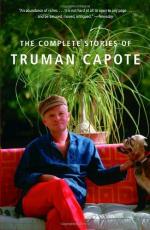|
This section contains 6,418 words (approx. 22 pages at 300 words per page) |

|
SOURCE: “Truman Capote: The Revelation of the Broken Image,” in Virginia Quarterly Review, Vol. 34, No. 4, Autumn, 1958, pp. 600–17.
In the following essay, Levine perceives Capote as a writer who deftly explores “the dichotomy in the world between good and evil, the daylight and the nocturnal, man and nature, and between the internal and external manifestation of things.”
The inclusion of Truman Capote in any discussion that pretends to be at most scholarly and at least literary is usually frowned upon by the more stern-faced of our critics. The mention of his name conjures up images of a wispish, effete soul languishing on an ornate couch, emitting an ether of preciousness and very little else. The reaction to the amazing success of his early books, Other Voices, Other Rooms and A Tree of Night, has relegated Capote to the position of a clever, cute, coy, commercial, and definitely minor figure...
|
This section contains 6,418 words (approx. 22 pages at 300 words per page) |

|


